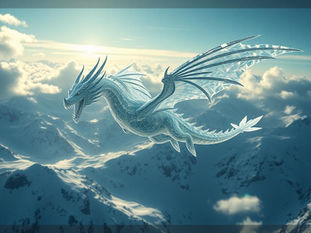
Writing Better Prompts for AI Image Generation
May 3
3 min read
0
0
0

Have you ever tried to create an image using AI, but the results weren't quite what you imagined? Getting exactly what you want from AI image tools often comes down to how you write your prompts. Let's look at how prompts work and how adding detail can make a big difference.
Starting Simple with Prompts
When you first start with AI image generation, you might use very basic prompts. For example, asking an AI like Co-pilot (which uses the DALL-E engine) to "create a picture of a castle next to a lake" gives you exactly that. The images are okay, but they aren't particularly exciting or detailed. They are functional but basic.
Adding More Details to Your Prompts
To get better results, you need to be more specific. Adding simple descriptive words can improve the outcome significantly. Changing the prompt to "create a photo picture with a castle next to a lake on a sunny day" already starts to make the images look much better. Including the word "photo" helps the AI understand you want a realistic style, and "sunny day" adds a specific atmosphere.
Being more precise gives the AI more to work with. It moves away from just a simple illustration to something that feels more like a photograph captured in a specific setting.
Getting Highly Detailed (and What Happens)
What happens when you add *lots* of details? You might try a prompt like: "create a picture photo picture intimate details of a castle next to a lake on a sunny summer day. A small fog on the lakeside. Light dancing across the space as dust. Paras float on the air. A small town on the other side of the lake. Two girls riding a horse between the town and the castle. Professional photography. Ultra HD 64k. Hyper realism."
Adding terms like "professional photography," "Ultra HD," and "hyper realism" tells the AI you want a very high-quality, realistic image. Including notes about lighting ("light dancing across the space as dusk") and other small elements helps build a specific scene.
Often, this level of detail creates very nice images. However, sometimes the AI might not include every single element you asked for. For instance, the AI might miss including the town or the girls riding horses. This shows that while detail is key, AI models don't always perfectly process every instruction, especially combining many elements.
Adjusting Prompts When Things Go Wrong
If the AI misses something or produces an unexpected result, don't give up. Try removing or adding words to make your request clearer. Sometimes a slight wording change makes all the difference in helping the AI understand exactly what you want.
Experimentation is part of the process. It can be fun to see what happens when you tweak your prompts.
Tools Can Make a Difference
While tools like Co-pilot using DALL-E can give good results, specialized platforms may offer more control and accuracy. Tools focused purely on image generation, like the TitanXT Midjourney Automation Suite, can provide more refined options to help you get closer to your vision consistently. For users serious about efficiency and scale in AI image creation, automating elements of the prompting and generation process is a game-changer. The Midjourney Automation Suite from TitanXT offers powerful features to streamline your workflow.
Finding Prompt Ideas
If you're stuck on what to write, look for inspiration. Many creators share prompts they've used successfully. Checking out community sections on video platforms or prompt libraries can give you great starting points. You can see not only the images generated but also the exact prompts used to create them. This is a great way to learn how small details or specific styles are requested.
Examples of different styles you can explore using detailed prompts:
Photo-realistic scenes
Abstract images
Art inspired by famous painters
Cinematic shots
Underwater photography looks
Seeing the prompts connected to these diverse images can spark your own ideas.
Ready to take your AI image generating to the next level? Explore advanced tools. The TitanXT Midjourney Automation Suite can help automate and enhance your creation process, allowing you to focus on the art.
Conclusion
Writing good prompts is a skill that improves with practice. Start simple, add details, and don't be afraid to experiment and refine your requests. Tools and resources like community prompt banks can provide inspiration and help you learn. Keep creating, and have fun seeing what incredible images you can generate.






